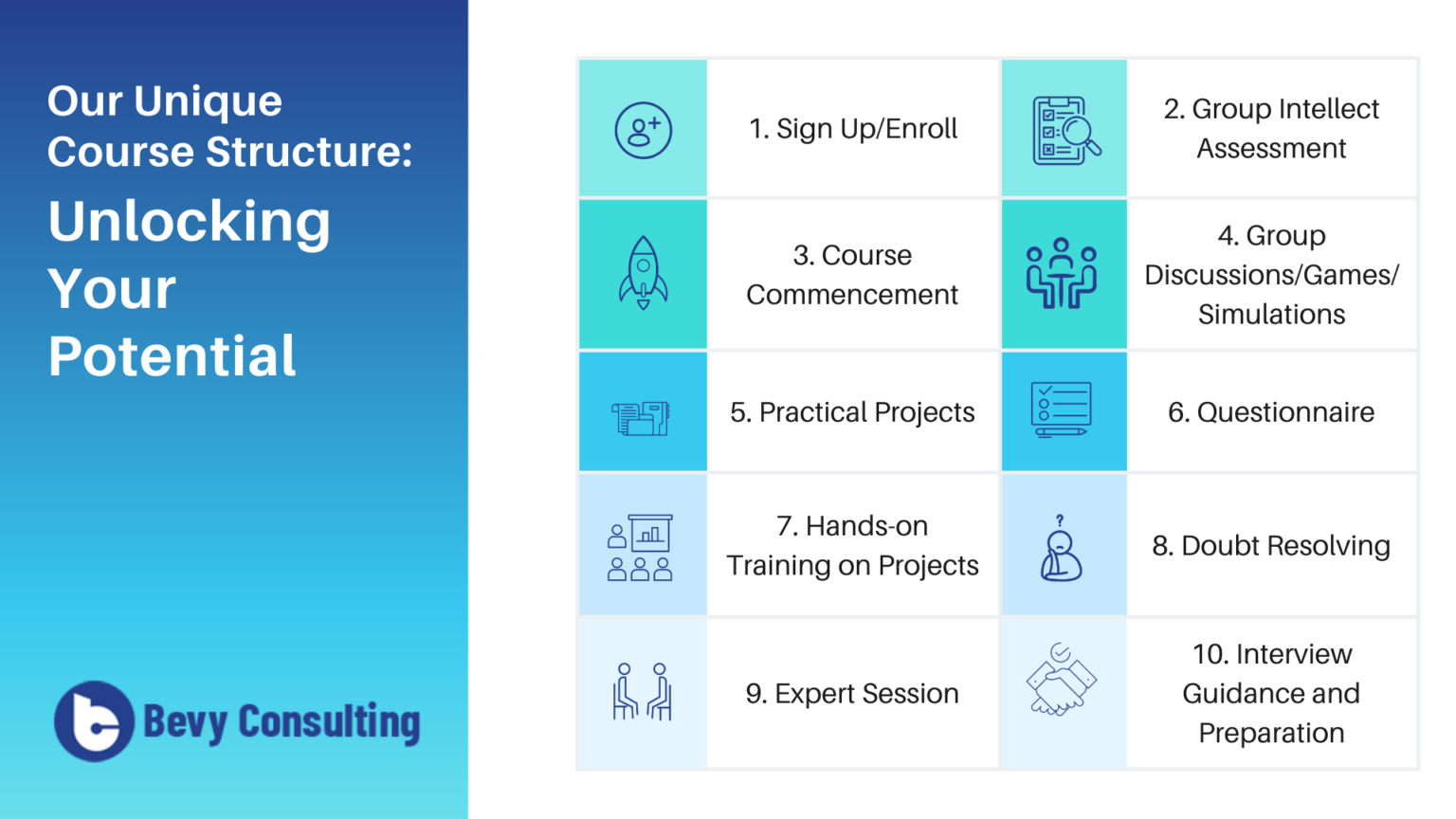Data Sciences and Machine Learning
September 11, 2022 2023-09-01 9:38Data Sciences and Machine Learning
Online Data Sciences and Machine Learning Course
2000+
Learners
3 Months
15hrs/week
Course Overview
Our Online Data Sciences and Machine Learning Course is designed for students in the USA, Canada, and the UK who want to become proficient in the field of data science and machine learning. In this course, you’ll learn how to collect, analyze, and interpret large amounts of data using programming languages such as Python, R, and SQL. You’ll also learn how to build predictive models and perform statistical analyses using machine learning algorithms and techniques. Our experienced instructors will guide you through hands-on labs and real-world scenarios to help you gain practical experience in data analysis and modeling. By the end of this course, you’ll have the skills and knowledge to become a competent and confident data scientist, ready to tackle complex data-related challenges in any organization. Join our Online Data Sciences and Machine Learning Course and take the first step towards a rewarding career in the field of data science and machine learning.
About the Course
The online Data Science and Machine Learning course are aimed at helping you master
all the basic and advanced level skills mandatory in the field of Data Science, Machine Learning,
Artificial Intelligence, and Deep Learning.
- Career essential topics covered
- 60+ case studies and projects
- Daily doubt resolution support
- 1:1 career mentorship sessions
Program Overview
- 70 Hours of Blended Learning
- Hands-on Training on Popular DevOps Tools
- Live Projects
- Essential Interview Training
- Resume Assistance
- On-Job support and assistance
Syllabus
Gain expertise from an expert-curated syllabus that includes the industry’s best practices taught in the form of practicals, case studies, and discussions
Program Overview
Syllabus
- What exactly is data science, and what precisely does a data scientist do?
- Various industry examples of data science and how Python is used for data science applications
- Numerous aspects in the Data Science process, such as data exploration, data wrangling, and model selection
- What is Machine Learning?
- What is Deep Learning?
- What is AI?
- Data Analytics & it’s types
- What is Python?
- Why Python?
- Installing Python
- Python IDEs
- Introduction to a fundamental Python construct
- Understanding indentation such as tabs and spaces
- Pound # character, names, variables and other code comments.
- Python data types include containers, numeric, text sequences constants, and more
- Python’s basic operators include logical, bitwise, assignment, comparison, and others, as well as slicing and the slice operator.
- Break, if, for, continue, else, range(), and other loop and control statements.
- Understanding OOP concepts such as encapsulation, inheritance, polymorphism, and abstraction
- What is the difference between access modifiers, instances, class members, classes, and objects?
- Function parameters and return types
- Lambda expressions are used to connect to a database and get data.
- Introduction to Python’s mathematical computing
- What are arrays and matrices, array indexing, array math, and the ND-array object
- Standard deviation, data types
- NumPy conditional probability, correlation, and covariance SciPy for Scientific Computing
- SciPy Fundamentals
- NumPy on top of NumPy
- What are the features of SciPy?
- SciPy subpackages include Signal, Integrate, Fftpack, Cluster, Optimize, Stats, and more.
- Using SciPy, prove the Bayes Theorem.
- Introduction to Machine Learning with Python Tools for Machine Learning in Python include NumPy, ScikitLearn, Pandas, Matplotlib, and more.
- Machine Learning Use Cases
- Machine Learning Process Flow and Machine Learning Categories
- Understanding Logistic Regression and Linear Regression
- In Machine Learning, what is gradient descent?
- Introduction to Python DataFrames, including importing data from JSON, CSV, Excel, SQL databases, and NumPy arrays into DataFrames. Various data operations such as selecting, filtering, sorting, displaying, joining, and combining, handling missing values, and time series analysis are covered in this data science training.
- What is a data object and what are its primary functions?
- It involves the use Pandas library to manipulate data
- Pandas library NumPy requirement, Pandas data loading and handling
- Concatenation and several sorts of joins on data objects, as well as how to merge data objects
- Exploration and analysis of datasets Matplotlib Data Visualization in data science training
- Matplotlib is used for plotting graphs and charts such as Histogram, Scatter, Pie, Bar, Line, and others
- It involves the use of Matplotlib API, Subplots, and Pandas built-in data visualization.
- Need of Machine Learning
- Introduction to Machine Learning
- Types of Machine Learning, such as supervised, unsupervised and reinforcement learning
- Why Machine Learning with Python and applications of Machine Learning.
- What exactly supervised learning and classification are all about?
- Decision Tree, an algorithm for inducing Decision Trees
- Forest at Random
- Matrix of Perplexity
- Naive Bayes, how it works, and how to implement the Naive Bayes classifier
- Support Vector Machine, Support Vector Mechanism, and Support Vector Mechanism Working Process
- What Hyper Parameter Optimization (HPO) is all about?
- Using Random Search vs. Grid Search
- How to go about putting a Support Vector Machine to work for classification in data science training?
- Introduction to supervised learning
- Types of supervised learning – regression and classification
- Introduction to regression
- Simple linear regression
- Multiple linear regression
- Decision Tree, an algorithm for Decision Tree induction
- Confusion Matrix
- Random Forest
- Naïve Bayes, working of Naïve Bayes, how to implement Naïve Bayes classifier
- Support Vector Machine, working process of Support Vector Mechanism
- What is Hyper Parameter Optimization
- Comparing Random Search with Grid Search
- How to implement a Support Vector Machine for classification?
- Assumptions in linear regression, and math behind linear regression.
- Hands-on Exercise – Linear Regression and Train-Test Implementation
- Introduction to classification
- Linear regression vs logistic regression
- Math behind logistic regression with detailed formulas log it function and odds
- Confusion matrix and accuracy
- True positive rate v/s false positive rate
- Threshold evaluation with ROCR.
- Hands-on Exercise – Logistic regression, Confusion matrix Implementation
- Introduction to tree-based classification
- Understanding a decision tree
- Impurity function and entropy to understand the concept of information gain for the right split of node
- Gini index
- Overfitting
- Pruning, pre-pruning, post-pruning, cost-complexity pruning
- Introduction to ensemble techniques
- Understanding bagging
- Introduction to random forests
- Finding the right number of trees in a random forest.
- Hands-on Exercise – Decision tree Implementation and hyper parameters in the random forest.
- Introduction to probabilistic classifiers
- Understanding Naïve Bayes
- Math behind the Bayes theorem
- Understanding a support vector machine (SVM)
- Kernel functions in SVM, and math behind SVM.
- Hands-on Exercise – Naïve Bayes and SVM implementation.
- How a save a model using Pickle
- Transfer a saved model
- Deploy a saved model
- Flask to deploy Machine Learning Model on Server
- Unsupervised learning introduction, unsupervised learning usage scenarios
- What is K-means clustering, and how does the K-means clustering method work?
- Clustering at its best
- What is the difference between hierarchical clustering and K-means clustering, and how does hierarchical clustering work in data science training?
- Grid search,many parameters, model training, and pipeline construction
- Types of unsupervised learning
- Clustering and dimensionality reduction
- Types of clustering
- Introduction to k-means clustering
- Math behind k-means
- Dimensionality reduction with PCA.
- Hands-on Exercise – K-Means and PCA implementation
- Importance of Dimensions
- Why Dimensionality Reduction
- PCA and its implementation
- LDA and its implementation
- Factor Analysis
- Scaling dimensional model
- Hands On: – PCA
- Hands On: – Scaling
- Define Association Rules
- Backend of recommendation engines and develop your own using python
- What are Association Rules?
- Association Rule Parameters
- Calculating Association Rule Parameters
- Recommendation Engines
- How Recommendation Engines work?
- Collaborative Filtering
- Content Based Filtering
- Hands On: – Apriori Algorithm
- Hands On: – Market Basket Analysis
- Introduction to Text Mining
- Introduction to Sentiment
- Setting up API Bridge, between Python and Twitter Account
- Extracting Tweet from Twitter Account
- Scoring the tweet

What Our
Learners Say
People love Bevy, so do you. Because this is the All-in-one solution for any Online studying, eLearning center.
Oliver Beddows
/ Designer, HydrabadMadley Pondor
/ Team Lead, BengluruMina Hollace
/ QA, PuneLuvic Dubble
/ Designer, DelhiFrequently Asked Questions









